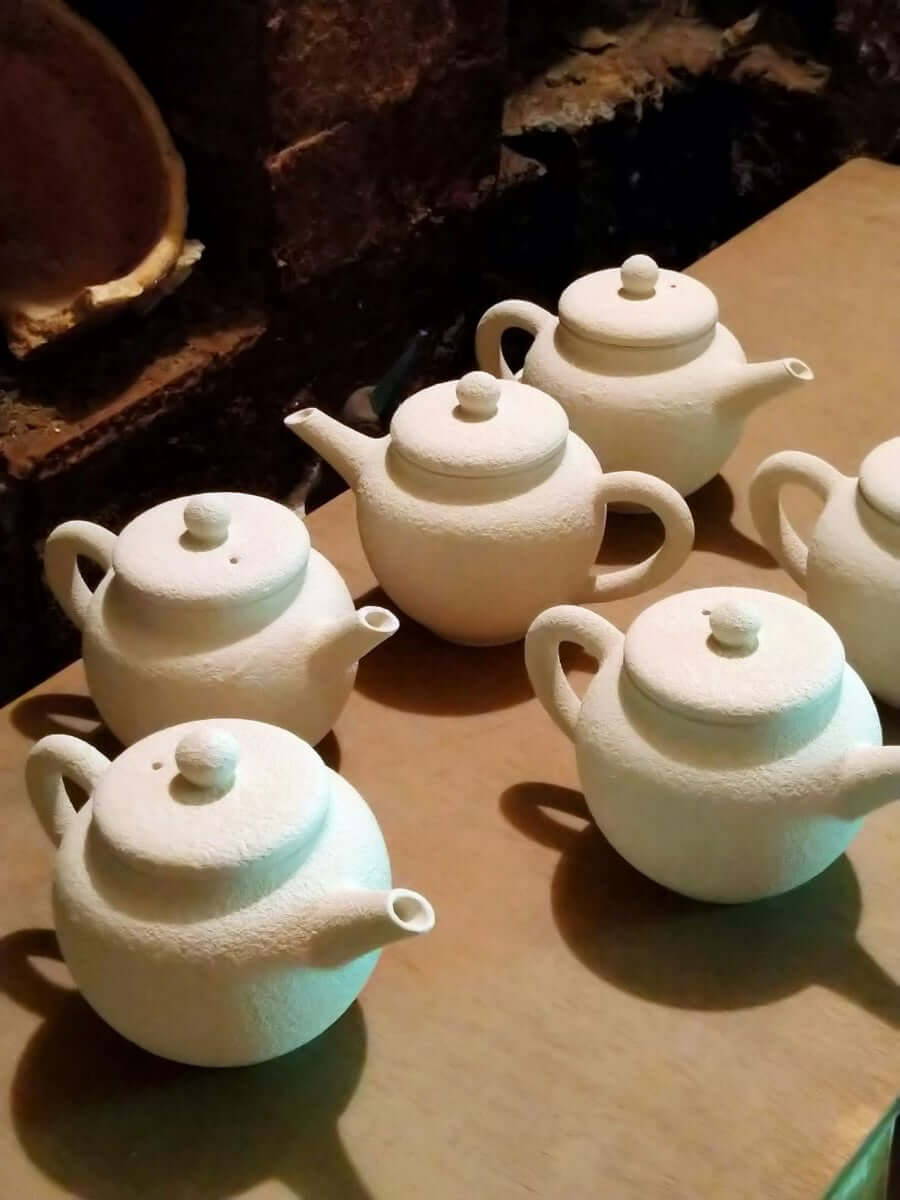
Kyoware Shibata kiln visit, Blue white teapot
Share
I visited Kyoware studio, Shibata kiln in Kyoto.
Shibata kiln is a kiln run by two artists: Yasuhisa Shibata and Emi Miyasato. Both of them trained as pottery makers in Kyoto and have inherited the delicate techniques and aesthetic sense of Kyoto ware. Tozando's teapots are mainly made by Mr. Shibata.
Both Mr. Shibata and Ms. Miyasato have been trained for many years, so their work is stable and precise. This sense of aesthetics has been applied to every detail of the vessel, with the spout, lid, handle, and bottom all beautifully finished. There are many different techniques used in Kyo-yaki, and it is difficult to define it, but when I look at the work of these two, I feel that the core of Kyo-yaki is a sense of beauty.
This time, I learned a lot about the second original teapot, the blue white porcelain teapot.
・Kneading soil
By kneading the clay-like soil, the particles contained in it are made as even as possible. By making the soil particles even, it reduces cracks and distortions during firing of the pottery. For this teapot, we use semi-porcelain clay, which is a mixture of pottery and porcelain clay to make the vessel durable.

・ Rokuro molding
Make the shape of a teapot. He prepares not only the outside of the vessel, but also the inside, making it beautiful and durable. When turning the potter's wheel, the tempo at which the soil stretches changes because the particles in that area are not uniform. Distortion and cracking can be minimized by removing soil with uneven particles during work.

・Glazing
This is a dry teapot with a blue-white porcelain glaze. Glazing blue and white porcelain is a difficult and delicate process.

・Putting in the kiln
The teapot is placed in a case called a ``saya.'' Blue white porcelain teapots were fired in the upper center of the kiln, where the fire was strongest.

・Nobori kiln firing
White vessels such as white porcelain and blue white porcelain are difficult to fire in a wood-fired kiln. It is necessary to take measures to prevent the ash and smoke from falling onto the teapot during firing. When white porcelain and blue-white porcelain are covered with ash, black spots appear on the surface and the porcelain loses its beautiful white color.
In modern times, both white and blue porcelain are often fired using gas or electricity, where the temperature can be easily adjusted. Firing in a wood-fired kiln requires the experience and skill of the artist, as the timing of reduction firing is difficult.

・Blue white porcelain teapot completed
It is a blue-white porcelain with a pale and beautiful color. When fired in a wood-fired kiln, the glaze on the surface of the vessel bubbles, making the surface uneven on a microscopic level. Its surface diffusely reflects light, creating a soft and warm atmosphere.
When I first saw Shibata kiln's blue white porcelain, I thought it had the same atmosphere as the old blue and white porcelain you see in museums. So I asked him to make a teapot made of blue white porcelain.
Although firing in a wood-fired kiln is time-consuming and expensive, there is still a quality to the pottery that can only be made in a wood-fired kiln. It may not be flashy at first glance, but it is a luxurious teapot that slowly reveals its quality.
Mr. Shibata is on the left of the image below, and the right is Tozando Wada.

